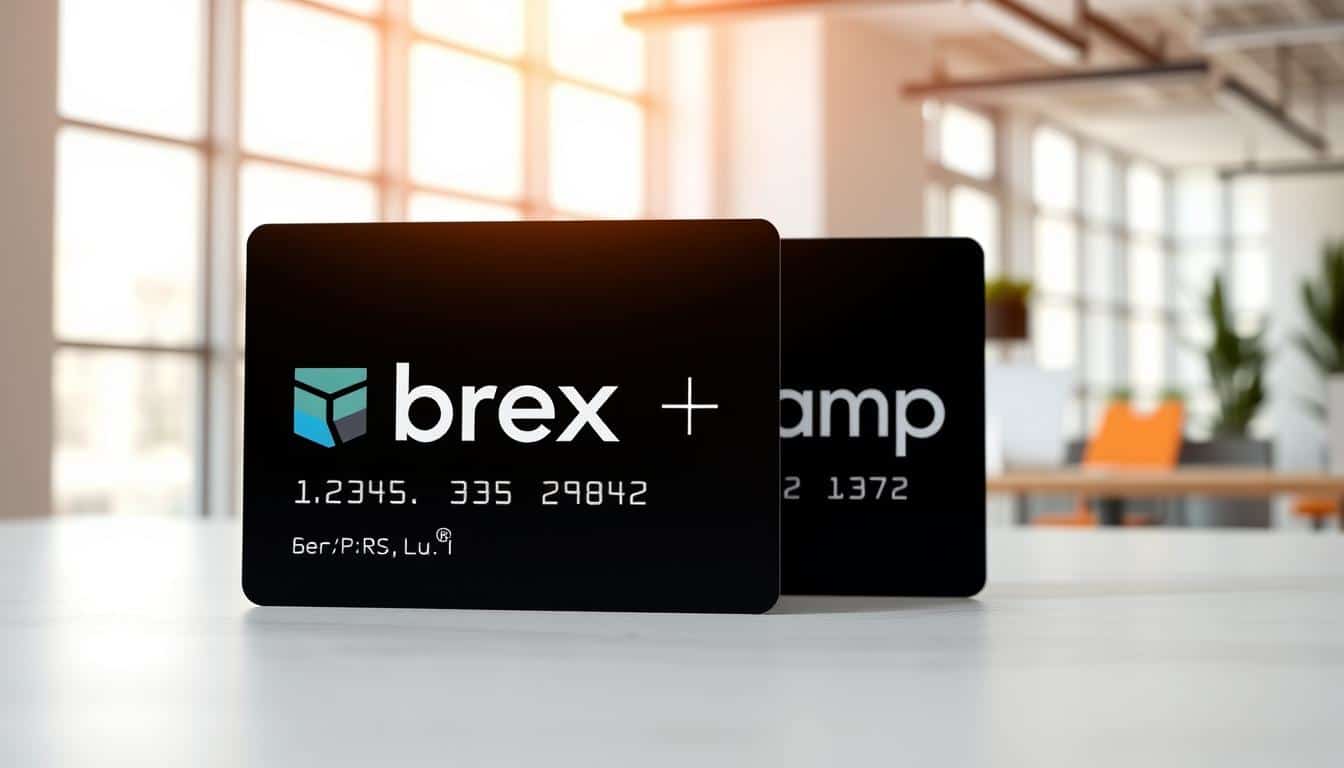The economic cycle is key to know the ups and downs of the U.S. economy. It has periods of growth and shrinkage that affect market trends and economic health. Knowing how these cycles work is important. They impact economic measures, how investors act, and government policies. This article will cover what economic cycles are, their stages, and how they affect various parts of the economy.

TD Cash Back Visa Infinite* Card
What Is the Economic Cycle?
The economic cycle shows how business activity goes up and down over time. It matters a lot to investors and those making policies because it helps decide how to invest, save, and create jobs. It’s made up of different stages that explain how healthy an economy is.
Anúncios
Definition and Importance
The economic cycle is about the times when an economy grows and when it shrinks, with clear phases. Knowing these phases helps people get ready for changes. These cycles are key to understanding stability and what might happen next in the economy.
Key Phases of the Economic Cycle
The phases of economic cycles include:
- Expansion: A time when business is booming, GDP goes up, and more jobs are available.
- Peak: The highest point of growth before things start to slow down.
- Contraction: A downturn when the economy slows, making less and causing more unemployment.
- Trough: The lowest point, signalling the end of a downturn and start of recovery.
The National Bureau of Economic Research (NBER) helps identify these phases. Knowing these key times is vital for understanding the economy’s up and down movements.

Understanding Business Cycles
Business cycles show how economic activity goes up and down over time. Each phase is important for affecting the economy and making policies. Knowing these cycles helps in planning investments and using resources wisely.
Phases of Business Cycles
The business cycle includes four main phases:
- Expansion: This is when the economy grows. GDP, jobs, and spending go up.
- Peak: The peak is the high point before the economy starts to slow. Jobs are often at their most during this time.
- Contraction: Now, the economy starts to shrink. There’s less output, more people are out of work, and people spend less.
- Trough: The trough is the lowest part of the cycle. Everything is at a low before it starts to recover.
Expansion vs. Contraction
Expansion and contraction are like two sides of a coin in business cycles. Expansion means more jobs and investments. People feel good about spending, which helps the economy grow more. On the flip side, contraction can lead to job worries and less spending. Understanding this helps companies forecast the market and tweak their strategies.
Measuring Economic Activity
To understand how to measure economic activity, we look at various indicators. These show how healthy a nation’s economy is. Indicators help show how business is doing. They help leaders make choices for growth and stability. One key indicator is the Gross Domestic Product (GDP). It’s important for seeing how the economy is doing.
Key Economic Indicators
Many indicators help measure economic activity. These include:
- Employment Rates: A strong employment rate means a growing economy. High unemployment means trouble.
- Consumer Spending: A big part of GDP, rising consumer spending means people believe in the economy.
- Industrial Production: This shows how much the industrial sector is making. It gives insight into economic trends.
Gross Domestic Product (GDP) and Its Role
The role of GDP in measuring economic activity is crucial. It’s the total value of all goods and services made in a country over time. A rising GDP means a strong economy. It shows demand and consumption are up. But, a falling GDP can warn of economic trouble. Understanding GDP is key in global economic talks and decisions.
Expansions and Contractions
Understanding economic expansions and contractions is key to knowing an economy’s health. These phases show how economic activities change, affecting businesses and people. Learning about economic expansions helps investors and decision-makers in the complex world of business.
Characteristics of Expansions
During growth periods, important economic indicators go up significantly. Economic expansions usually have traits like:
- Rising Gross Domestic Product (GDP)
- Increased consumer spending
- Low unemployment rates
- Higher business investments
- Growth in industrial production
This growth leads to more jobs, which helps the economy grow even more, making it strong. Companies often increase their investments during these times, looking to grow with the booming market.
Identifying Contractions
Contractions are the tough times that need careful review. Spotting economic contractions comes from closely watching different economic signs. Signs of a contraction might be:
- Declining GDP
- Rising unemployment rates
- Decreased consumer confidence
- Falling retail sales
- Lower business investments
Catching these early lets businesses and government take steps to lessen a slowdown’s impact. Staying alert and monitoring regularly is crucial in handling economic drops well.
The Role of Recessions
A recession is important for understanding the economy. It matters to both buyers and government leaders. It’s vital to know about the phases in a recession.
Economically, knowing what a recession means is key. It usually means the economy is going down for months. This is seen in things like GDP, income, and jobs.
Defining a Recession
A recession is often defined as when GDP drops for two quarters in a row. This drop lowers people’s confidence and spending. This leads to several economic problems.
Knowing what a recession means helps people respond right when the market changes.
Causes of Recessions
Knowing why recessions happen helps prevent them. Many things can cause a recession, such as:
- When banks make it hard to get money or credit
- Big events like natural disasters or wars that affect trade
- A big fall in how much people spend, often because they’re unsure about the future
Understanding these causes helps make good policies to lessen the recession’s impact.
Economic Cycle Dynamics
The dynamics of economic cycles are shaped by many factors. These factors affect how stable and strong an economy is. Economists and policymakers study these to better understand and manage economic changes.
Monetary policy, fiscal policy, and global economic conditions are key elements. They play a big role in shaping economic cycles. Knowing how to handle these aspects well is crucial for steady economic growth.
Factors Influencing Economic Cycle Dynamics
Factors influencing economic cycles include:
- Monetary policy adjustments that affect interest rates and credit availability.
- Fiscal policy changes that dictate government spending and taxation levels.
- Global economic conditions, including trade relationships and international market trends.
- Consumer confidence and spending patterns that drive demand for goods and services.
Comparing Economic Cycles Across Countries
Different countries manage their economic cycles in various ways. Countries with flexible policies often see less volatility and more growth.
For example, nations like Canada, Australia, and several Nordic countries do well during tough times. Their strong policies and flexible economies help them stay stable when facing global challenges.
The Severity of Economic Downturns
To understand how bad economic downturns can get, we look at their depth, diffusion, and duration. These aspects tell economists how much the economy is struggling. They also help in coming up with ways to fix things. Each “D” gives important info on how downturns play out and their effects on different areas.
Understanding the Three D’s: Depth, Diffusion, and Duration
Depth shows how big the drop in the economy is. If the downturn is deep, it means a serious recession. This hits GDP and jobs hard. Diffusion looks at the spread of the downturn across industries and places. A widespread impact means more sectors face trouble. This leads to bigger economic issues.
Duration is about how long the bad times last. The longer it lasts, the harder the recovery. Long downturns hurt people’s willingness to spend and businesses’ plans to invest.
Historical Examples of Economic Downturns
Looking at past economic troubles teaches us a lot. The Great Depression, starting in the late 1920s, is a key example. It was very deep, hit almost all sectors, and went on for years. This shows how interconnected and fragile economies can be during tough times. The 2008 financial crisis had similar characteristics. These examples show why it’s crucial to understand the three D’s to measure how bad a downturn is.
The Stock Market and Economic Cycles
The link between economic cycles and stock market movements is key for investors. Stock prices usually go up during growth periods, showing confidence and progress in the economy. But, when the economy slows down, stocks can fall as investors become cautious. Knowing these patterns helps investors manage their investments wisely.
Relationship Between Economic Cycles and Stock Market Trends
Economic cycles significantly affect stocks. As the economy expands, companies often see higher profits, pushing stock prices up. This growth phase makes investors want to buy more, showing strong confidence in the market. But, during slowdowns, fear of a downturn may lead to falling stock prices. Investors may sell off their shares to avoid losses. Recognizing these shifts is crucial for managing investments and staying calm during market swings.
Managing Investments During Economic Downturns
Handling investments when the economy slows is about reducing risk. Investors might:
- Look at stable stocks in industries less affected by economic changes, like utilities.
- Keep investments spread out across different sectors to lower risk.
- Review and adjust where money is invested based on the latest economic data.
With these strategies, investors can protect themselves during tough times. They can also find new chances for growth as the economy starts to improve again.
External Influences on Economic Cycles
Economic cycles do not stand alone. They are shaped by many outside factors. Understanding these influences helps explain why the economy changes in hard-to-predict ways.
The Impact of Geopolitical Events
Geopolitical events strongly influence the economy. Things like trade disputes, political turmoil, and wars create uncertainty. This uncertainty affects the economy by:
- Disrupting supply chains, which slows down production.
- Changing trade relationships, impacting market access.
- Swinging investor confidence with risk levels.
It’s key to watch geopolitical news to know how it might affect economic cycles.
Technological Changes and Their Effects
Technology brings new ways to produce goods and changes what consumers want. Its impact on the economy includes:
- Boosting efficiency, which cuts production costs.
- Changing job needs as automation changes the workforce.
- Creating new consumer demands through tech advances.
As technology reshapes our world, it offers both chances and risks for economic cycles. Staying flexible is crucial in this fast-moving scene.
Cyclical Trends in Different Sectors
Understanding cyclical trends in various sectors is crucial for insight. Each industry reacts uniquely to economic ups and downs. This shows if they’re strong or weak against economic changes. Knowing how they respond helps investors. It lets them adjust their investments to do better.
How Various Sectors React to Economic Cycles
Different sectors react to economic cycles in their own ways. For example:
- Consumer discretionary sectors, like entertainment and luxury goods, are often hit hard during economic downturns. People spend less on things they don’t need.
- Consumer staples, however, remain steady. People always need essential goods, making this sector more stable.
- Financial services see ups and downs affected by interest rates and how much people borrow or lend.
The Importance of Sector Diversification
Diversifying your investments is key to managing risk. Not all sectors act the same with economic changes. Spreading out investments can:
- Lessen the blow of downturns in riskier industries.
- Tap into growth from sectors that do well in certain economic climates.
- Bring more balance and lower risk as sectors differ in their economic reactions.
Challenges in Predicting Economic Cycles
Predicting economic cycles is like walking through a maze. There are many factors like how people feel, government actions, and events globally. These all heavily influence the economy. Figuring out how they all connect is very hard when trying to guess future economic turns.
The Complexity of Economic Predictions
Economists use complex models to try and guess where the economy will go. But the economy’s wild nature makes it tough to forecast. Things like inflation, job numbers, and how markets behave all mix together. This makes it tricky to predict the economy’s direction accurately.
External Shocks and Their Impact on Predictability
Sometimes, unforeseen events throw off even the best predictions. Big surprises like natural disasters, political unrest, or economic crashes hit markets hard. These shocks can quickly change how confident people are and how they spend money. This can wreck economic forecasts. It’s vital for those making policies and investing to grasp these incidents.
Conclusion
It’s crucial to know about economic cycles to understand the big picture of economics. Knowing the different stages of these cycles can help make wise choices in investing and policymaking. It’s also key to keep an eye on certain economic signs. This can tell us what might happen to the economy and markets, getting us ready for any ups or downs.
Summarizing key points shows how business cycles, recessions, and outside factors are linked. Seeing how these things connect gives a full view of how the economy moves. By paying attention to these cycles and what causes them, people and companies can better deal with economic ups and downs.
In the end, knowing about economic cycles isn’t just for making policy or deciding where to put money. It also affects how people buy things and how companies plan. Learning from the study of economic cycles can really help everyone involved in the market.
FAQ
What is the economic cycle?
What are the key phases of the economic cycle?
How is economic activity measured?
What characterizes an economic expansion?
What defines a recession?
What factors influence economic cycles?
How is the severity of economic downturns assessed?
What is the relationship between economic cycles and the stock market?
How do geopolitical events affect economic cycles?
Why is sector diversification important during economic cycles?
What challenges exist in predicting economic cycles?
Conteúdo criado com auxílio de Inteligência Artificial



